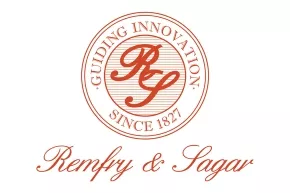- within Intellectual Property topic(s)
- with Finance and Tax Executives and Inhouse Counsel
- in European Union
- in European Union
- in European Union
- in European Union
- with readers working within the Automotive, Banking & Credit and Law Firm industries
The law - any law - leans towards balancing equities. The current AI litigations represent uncharted waters wherein fresh statutory interpretation is required to deal with new technology. This is not the first technological leap that copyright regimes have faced and ultimately equilibrium will be found between the rights and obligations of all parties – though it may take time. Several AI based cases are ongoing across the globe and a few judgements have trickled in from the US but it cannot be said that the judgements are tilting in favour of copyright owners or Gen AI tools.
What's New
The latest development comes in the case of Bartzv. Anthropic. In 2024, authors Andrea Bartz, Charles Graeber, and Kirk Wallace Johnson sued Anthropic, alleging that the company unlawfully used their books to train its artificial intelligence models. In June, California district judge William Alsup issued a summary judgment holding that the use of books for AI training was transformative fair use under copyright law. It also found that Anthropic's digitisation of legitimately purchased books for its central library qualified as fair use, since the company already owned the print copies and simply converted them to digital form.
However, the court took issue with Anthropic's acquisition of certain works from so-called shadow libraries such as LibGen, ruling that this amounted to piracy. It was ruled that claims relating to pirated copies could proceed to trial as a class action. The judge also emphasized that the AI outputs shown to users were not close enough to the authors' works to constitute infringement, but left open the possibility that this could change if outputs ever reproduced the original texts.
A full trial on the piracy claims was slated to begin in December 2025, however, on August 26 it has been reported that Anthropic has reached a preliminary settlement in the class action lawsuit. Under U.S. copyright law, statutory damages for piracy begin at $750 per infringed work and given Anthropic's dataset of approximately 7 million books, the company was facing potential exposure running into billions of dollars.
The Kadreyv. Meta ruling issued in May 2025 marks the other landmark moment. Though the court returned a finding of fair use in favour of Meta, here too it noted that the concept of market dilution was highly relevant to the fair use analysis given LLMs' ability to flood the market with competing works. The judge acknowledged that the case's outcome might have been different with stronger evidence presented by the authors/plaintiffs on market harm and dilution.
It is pertinent to highlight that the US courts in Thomson Reuters v. Ross Intelligence took a different stance. Thomson Reuters sued ROSS Intelligence in May 2020, alleging that the AI/legal research company unlawfully copied content from Thomson Reuter's legal research platform Westlaw for the purpose of training its AI-based platform. In February 2025, the court granted summary judgment that such copying was not fair use, emphasizing that the purpose of ROSS's copying was to build a directly competing product.
In India, the first Gen AI lawsuit - ANI Media Pvt. Ltd. v. Open AI Inc & Anr., 2024 - raises similar questions under the (Indian) Copyright Act, 1957, including the fair dealing exception under Section 52. The lawsuit is ongoingand its outcome is eagerly anticipated.
Each dispute is multi-faceted and it is difficult to present a black and white analysis. Copyright claims are being made (and challenged) at the stage of storage of training data, its use/processing and the resultant output. The floor is open for creative arguments and decision making and it will be interesting to see how the law and decisions evolve.
Implications for the creative industry
The implications may not be positive if AI developers are given a free hand to train LLMs. Creators and authors may be discouraged if a flood of AI generated competing products reduce the monetisation potential of the outcome of their skill, labour and judgment.
A balanced approach would be one where the creative industry is able to reap the benefit of its creations and AI models also develop optimally – no one can argue that the transformational leap promised by AI ought to be stymied. A balance could be achieved through licensing models that take into account factors such as the amount of copyrighted work used; slabs for progressive license fees; collective licensing schemes; better metadata standards; opt-out models; efficient book keeping and record maintenance by creators; etc. For instance, Perplexity has recently introduced a new subscription tier for its AI browser Comet that includes a revenue sharing model for publishers.
Such models are likely to emerge in the aftermath of the ongoing AI litigations.
Notably, arguments are also made in favour of authors/creators using the option of 'opting out' - creators must clearly say no to use of their content for training AI models. In this connection, under the AI Act in the EU, it is mandated that AI be transparent about their data sources.
Are Indian copyright laws written long before AI sufficient?
The Government of India had issued a press release on February 9, 2024 stating that AI and related innovations is an evolving stream of technology and the current legal framework under the Patent and Copyright Act is well-equipped to protect AI generated works and related innovations.
It remains to be seen how the judiciary interprets the existing provisions of the Copyright Act while adjudicating disputes on AI generated works. Stake holders are awaiting the outcome of the ANI case (supra).
On the issue of transformative use, unlike U.S. copyright law - which explicitly considers transformative use as a key element of fair use - the (Indian) Copyright Act does not use the term 'transformative'. However, Indian courts have adopted the spirit of the transformative use doctrine when interpreting fair dealing under Section 52 – for instance in Syndicate of the Press of the University of Cambridge v. B.D. Bhandari &Ors., 2011.Here the Division Bench of the Delhi High Court held that the use of a copyrighted work to create a guidebook served a substantially different purpose from that of the original work. The Court acknowledged this to be a transformative purpose and one that did not interfere with the purpose underlying the plaintiff's original creation. In doing so, the court arguably limited the scope of the Plaintiff's reproduction right to uses aligned with the expressive purpose for which the work was originally authored.
What does this mean for the AI and the creative industry?
The AI industry should avoid making use of pirated data and explore licenses, wherever applicable (which is becoming quite common). For the creative sector, this moment serves both as a challenge and an opportunity. It is time to evolve new licensing schemes, better metadata standards, improve book-keeping, and conduct policy intervention wherever needed.
The content of this article is intended to provide a general guide to the subject matter. Specialist advice should be sought about your specific circumstances.


